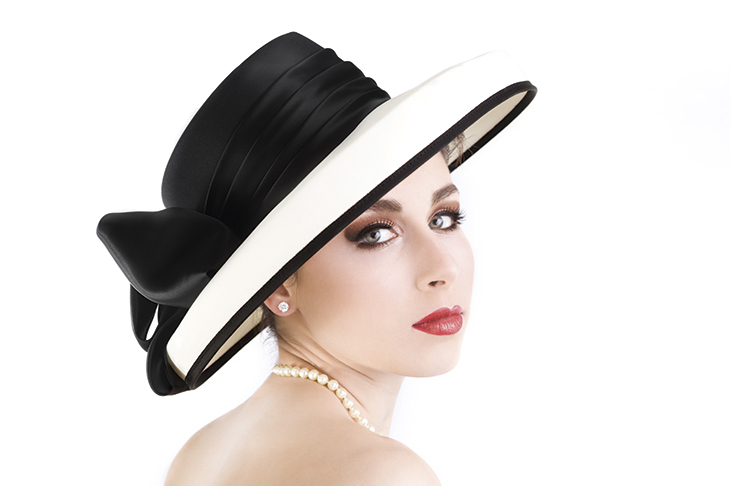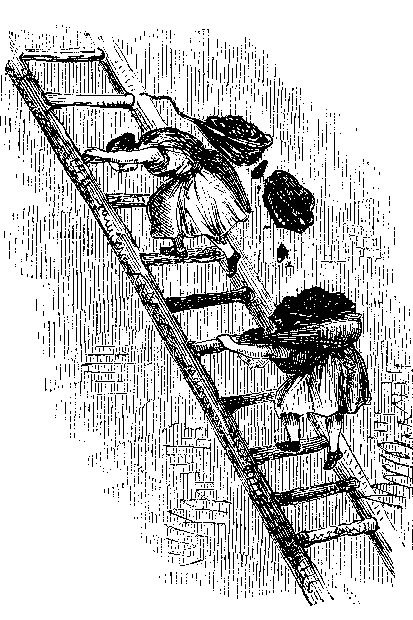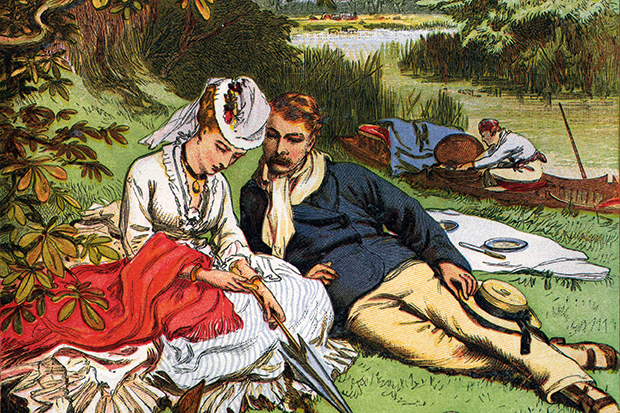‘Thank goodness for racing,’ says Rachel Trevor-Morgan. She is a milliner — a hat maker — so it’s no surprise she’s grateful. Without weddings and race days, many milliners would be out of business.
If you want to gain entry into the Royal Enclosure during Ascot week, a hat is non-negotiable. And it’s not just any old hat: the rules dictate that your headpiece must have a base of at least 10cm in diameter.
The Ascot ruling was brought in in 2012 to put a stop to the trend for tiny fascinators, essentially just twiddles of feathers and fluff that perch above the hairline. For the very latest in fascinators, look at Ivanka Trump during the Trump family visit to Westminster Abbey. Sitting above her right eye is a sort of felt bedpan designed by milliner to the stars Philip Treacy. Thank heavens a new generation of hat-makers are making proper hats fashionable again.
There is something about the wearing of a hat, especially for formal occasions, that’s particularly British. But why? As with so many British traditions, the royal family is in part behind it. Royal protocol dictates that women must wear hats to all official occasions because up until the 1950s upper-class women rarely showed their hair in public.
In this country, we hang on to our sartorial traditions. A British man might still wear a top hat to Ascot or a wedding even though it’s more than 200 years since toppers first made an appearance. In 1797, a haberdasher called John Hetherington ventured out in a hat in the shape of a stovepipe. Within a short time, the story goes, a large crowd had gathered around him. Women fainted, children cried and dogs barked. There was such chaos that the ‘officer of the law’ grabbed Hetherington by the collar and summonsed him before the court. He was accused of disturbing public order and fined £500.
The hat-maker relied in his defence on the right of every Englishman to place what he wanted on his head. The Times wrote the following day: ‘Hetherington’s hat points to a significant advance in the transformation of dress. Sooner or later, everyone will accept this headwear. We believe that both the court and the police made a mistake here.’
The Times was right. Hat manufacturers in England made a substantial amount of money from this ‘extravagant construction’. Some also poisoned themselves: the phrase ‘mad as a hatter’ came about because many hat-makers were adversely affected by the mercury in hat felt.
Our hat manufacturers and sellers are still making a mint. An antique silk topper in good condition will sell for anything up to £2,000. Men’s heads tend to be bigger nowadays, too, and the price goes up accordingly.
Young milliners such as Jess Collett, Vivien Sheriff, Cara Meehan and Emily Baxendale now incorporate brightly coloured veiling, sequins, feathers and huge flowers into their designs to bring their hats into the 21st century. And London is still king as far as the hat is concerned. Philip Treacy, Stephen Jones and Jane Taylor are all based in the city, and the London College of Fashion and Kensington and Chelsea College are still turning out the world’s best milliners.
Got something to add? Join the discussion and comment below.
Get 10 issues for just $10
Subscribe to The Spectator Australia today for the next 10 magazine issues, plus full online access, for just $10.
You might disagree with half of it, but you’ll enjoy reading all of it. Try your first month for free, then just $2 a week for the remainder of your first year.















Comments
Don't miss out
Join the conversation with other Spectator Australia readers. Subscribe to leave a comment.
SUBSCRIBEAlready a subscriber? Log in